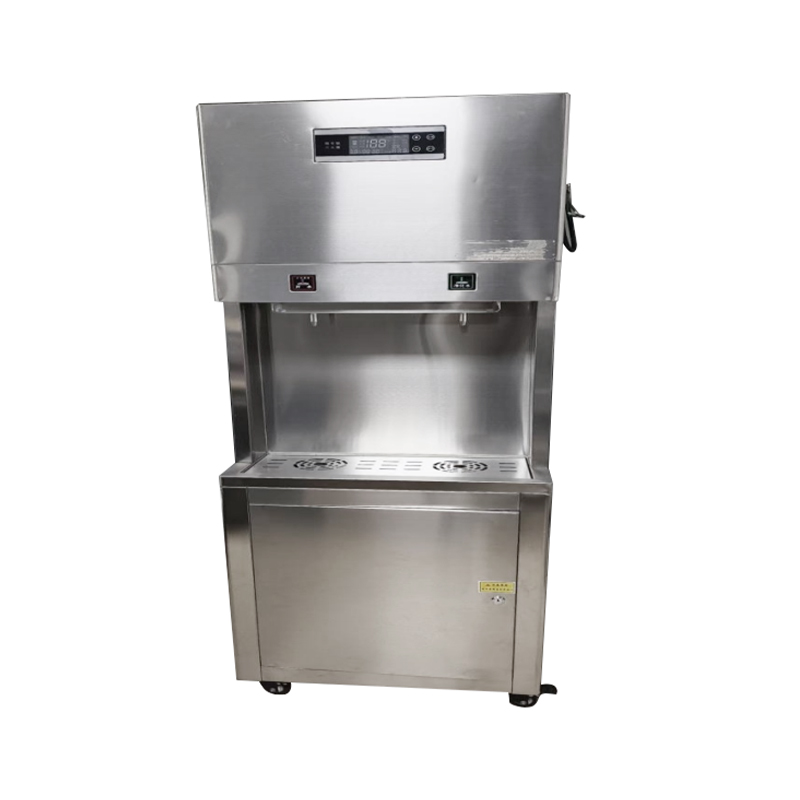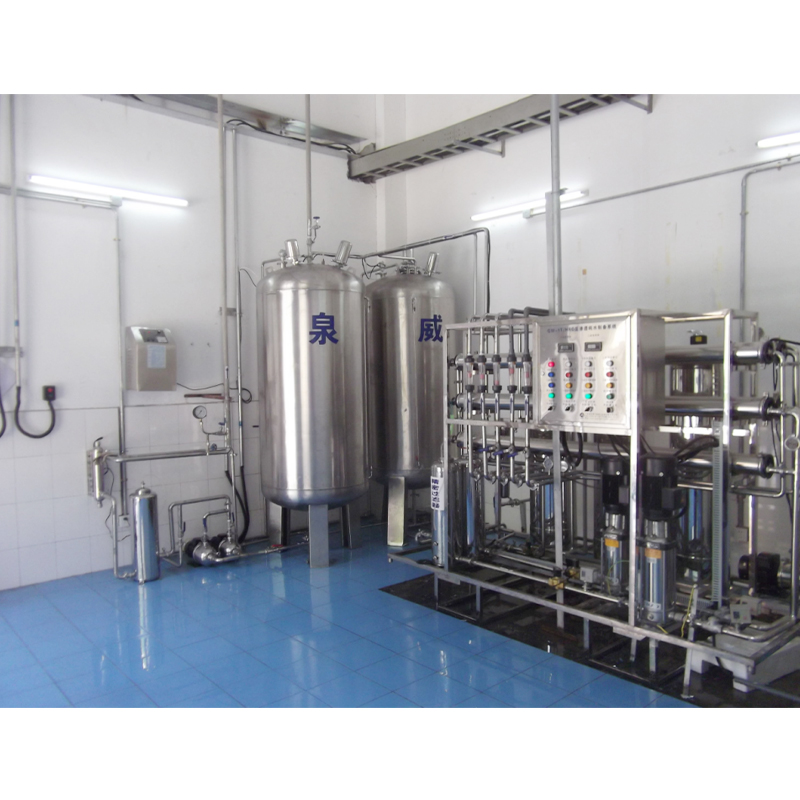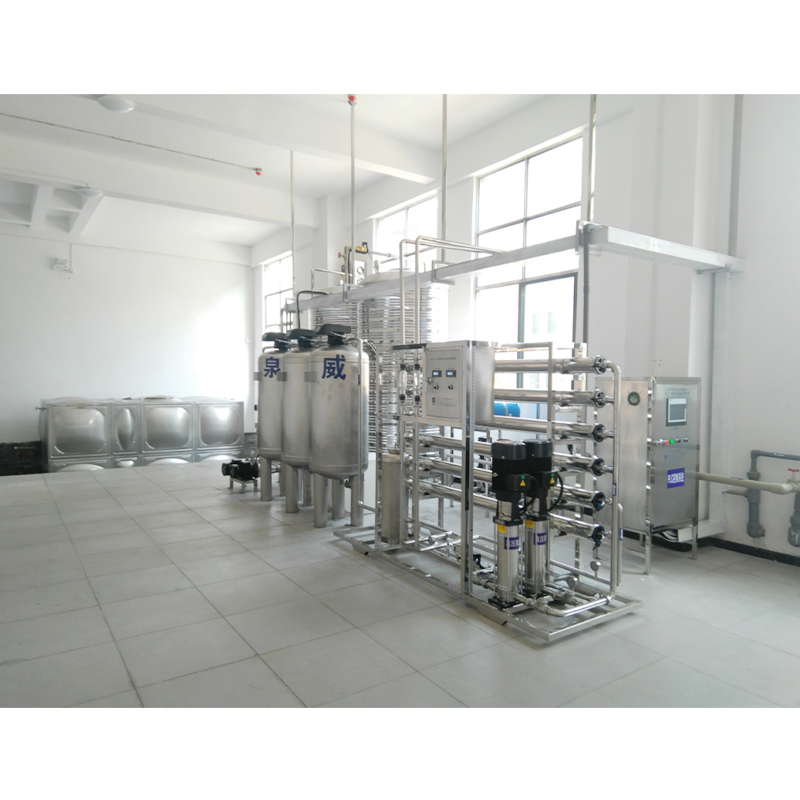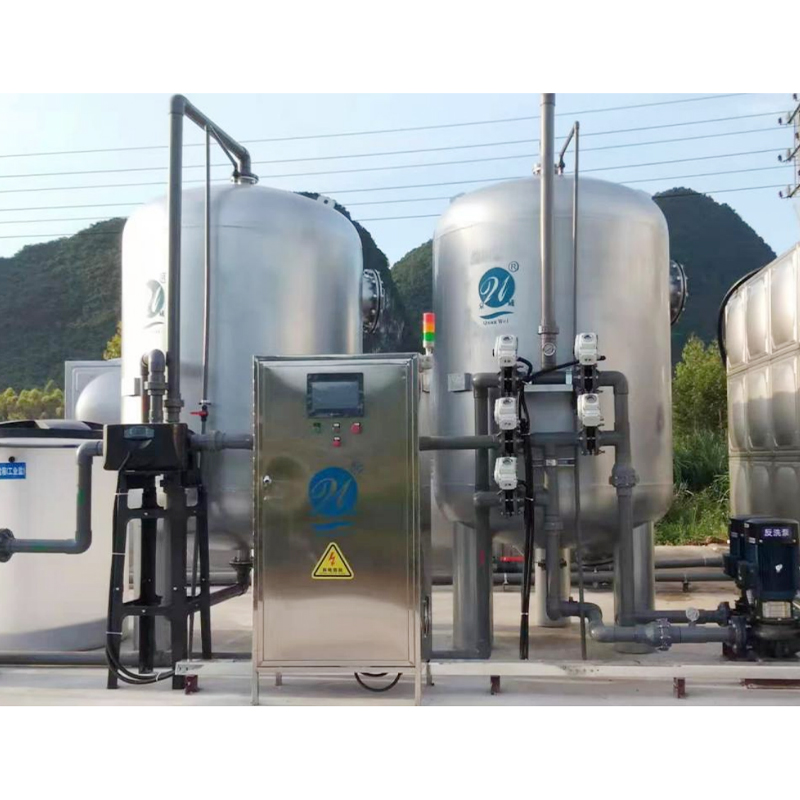What is the energy consumption level of reverse osmosis pure water preparation device?
Release Time : 2025-07-09
As an advanced water treatment method, reverse osmosis pure water preparation device has significant advantages in providing high-quality pure water. However, its operation inevitably involves energy consumption. In general, the energy consumption of the reverse osmosis system is mainly concentrated on the electrical energy required for the high-pressure pump to work.
Factors affecting energy consumption
Multiple factors affect the energy consumption level of the reverse osmosis system. First, the quality of the influent water is a key factor. If the raw water contains higher salt or other impurities, then in order to achieve the same water quality, the system needs to apply higher pressure, thereby increasing energy consumption. Secondly, temperature is also a factor that cannot be ignored. Generally, as the water temperature increases, the flux of the reverse osmosis membrane increases, which means that the required pressure can be reduced at the same water output, thereby reducing energy consumption. In addition, the maintenance status of the system also directly affects the energy efficiency. Good maintenance can ensure that the equipment is always in the best working condition and avoid energy waste caused by aging or failure of components.
Discussion on energy-saving measures
In order to effectively reduce the energy consumption of the reverse osmosis system, it is necessary to take a series of energy-saving measures. Optimizing system design is one of the first steps. By selecting appropriate membrane materials and technical parameters, energy loss can be minimized while ensuring the quality of the effluent. In addition, the use of energy recovery devices is also an effective means of energy conservation. For example, the use of pressure exchangers can reuse the energy carried by concentrated water when it is discharged for the pressurization of raw water entering the system, greatly improving the overall energy utilization efficiency. In addition, intelligent control systems are also widely used in modern reverse osmosis systems. They can monitor system performance in real time and automatically adjust operating parameters to achieve the best operating results and the lowest energy consumption.
Economic and environmental considerations
From an economic point of view, although the initial investment in reverse osmosis systems is large, due to its low operating costs and long service life, it still has good economic benefits in the long run. Especially in areas with scarce water resources or industries with strict requirements on water quality, such as electronics and medicine, the application of reverse osmosis technology can not only solve the water problem, but also bring considerable economic benefits. From the perspective of environmental protection, compared with traditional distillation or other high-energy consumption water treatment technologies, reverse osmosis technology has shown unique advantages in reducing greenhouse gas emissions and supporting sustainable development goals due to its relatively low energy consumption.
In summary, the energy consumption level of the reverse osmosis pure water preparation device is affected by many factors, including inlet water quality, temperature, and system maintenance. By implementing effective energy-saving measures, such as optimizing system design, applying energy recovery technology, and introducing intelligent control systems, not only can energy consumption be significantly reduced, but the overall performance of the system can also be improved. In the long run, this not only helps users save costs, but also makes a positive contribution to environmental protection.
Factors affecting energy consumption
Multiple factors affect the energy consumption level of the reverse osmosis system. First, the quality of the influent water is a key factor. If the raw water contains higher salt or other impurities, then in order to achieve the same water quality, the system needs to apply higher pressure, thereby increasing energy consumption. Secondly, temperature is also a factor that cannot be ignored. Generally, as the water temperature increases, the flux of the reverse osmosis membrane increases, which means that the required pressure can be reduced at the same water output, thereby reducing energy consumption. In addition, the maintenance status of the system also directly affects the energy efficiency. Good maintenance can ensure that the equipment is always in the best working condition and avoid energy waste caused by aging or failure of components.
Discussion on energy-saving measures
In order to effectively reduce the energy consumption of the reverse osmosis system, it is necessary to take a series of energy-saving measures. Optimizing system design is one of the first steps. By selecting appropriate membrane materials and technical parameters, energy loss can be minimized while ensuring the quality of the effluent. In addition, the use of energy recovery devices is also an effective means of energy conservation. For example, the use of pressure exchangers can reuse the energy carried by concentrated water when it is discharged for the pressurization of raw water entering the system, greatly improving the overall energy utilization efficiency. In addition, intelligent control systems are also widely used in modern reverse osmosis systems. They can monitor system performance in real time and automatically adjust operating parameters to achieve the best operating results and the lowest energy consumption.
Economic and environmental considerations
From an economic point of view, although the initial investment in reverse osmosis systems is large, due to its low operating costs and long service life, it still has good economic benefits in the long run. Especially in areas with scarce water resources or industries with strict requirements on water quality, such as electronics and medicine, the application of reverse osmosis technology can not only solve the water problem, but also bring considerable economic benefits. From the perspective of environmental protection, compared with traditional distillation or other high-energy consumption water treatment technologies, reverse osmosis technology has shown unique advantages in reducing greenhouse gas emissions and supporting sustainable development goals due to its relatively low energy consumption.
In summary, the energy consumption level of the reverse osmosis pure water preparation device is affected by many factors, including inlet water quality, temperature, and system maintenance. By implementing effective energy-saving measures, such as optimizing system design, applying energy recovery technology, and introducing intelligent control systems, not only can energy consumption be significantly reduced, but the overall performance of the system can also be improved. In the long run, this not only helps users save costs, but also makes a positive contribution to environmental protection.







